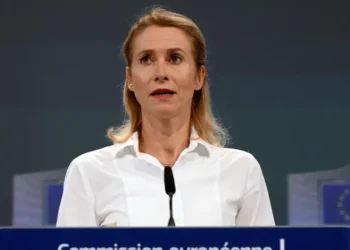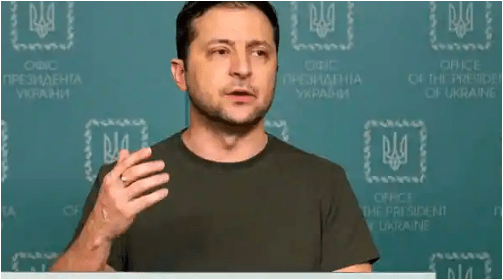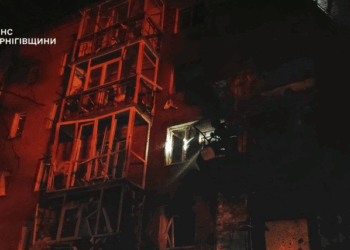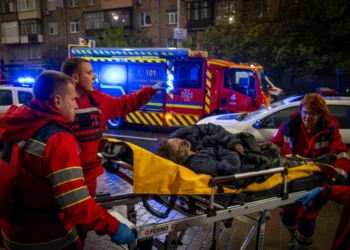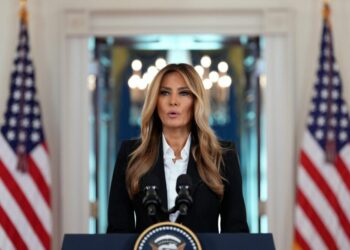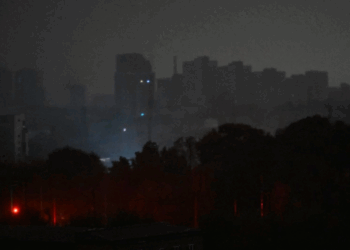From Piro Ahmetaj
In my capacity as Senior Expert on National Security, Balkans and USA/NATO, and due to my engagements with the Institute of War, McCain, AC, CSCE, etc., in Washington, Brussels, etc., I have followed with strategic attention 1150 days of bloody fighting on the battlefield with/for Ukraine. Below, find a summary of the dynamics up to the current state, as well as 3 options for stopping the bloodshed in Ukraine, but also for ending the neo-Nazi adventure in Europe.
On February 24, 2022, Putinist Russia launched an unprecedented military attack since the end of World War II (using land, air, and naval capabilities simultaneously) against the territorial integrity of a sovereign state. Putin’s goal was not only to “quickly” defeat the Ukrainian army (by May 9, 2022 at the latest), but also to humiliate the global order, the boundaries of democracy, cohesion, Western values, and the military power of the Euro-Atlantic Alliance. Thanks to the martyred resistance of the Ukrainians, as well as the critical support of the US/NATO after 3 years and 2 months of bloody fighting, none of these strategic objectives have been achieved by neo-Stalinist Russia.
- The situation of the warring parties after 38 months of bloody fighting:
Territories occupied by Russia:Despite stoic resistance and several successful counterattacks by Ukraine (including the liberation of occupied territories, such as Kherson, etc.), significant regions have been occupied by Russia, such as Donbass, Luhansk, Donetsk, Crimea, Mariupol and Zaporizhzhia. In total, Russia controls 15%-20% of Ukraine. To make it simpler for the public opinion, while Ukraine is over 600 thousand km2(3 times more than the entire Western Balkans), Russia today owns about 3 times the territory of the Republic of Albania!
Human losses.About 1.5 million soldiers and civilians have been killed or wounded on both sides. Russian troop losses are higher (over 1 million) and Ukraine less than ½ of Russia’s.
Economic cost.The war has enormous costs. According to some estimates, Russia has spent up to €35 billion per month, totaling over €10 trillion, or 5 times Russia’s GDP by 2024. As a result of the sanctions, Russia has suffered huge losses in both natural resources (gas & oil) and military equipment (aircraft, drones, tanks, missiles). Of course, the Ukrainian economy has also suffered major damage to its infrastructure, and it is unlikely to recover in the short term.
The condition of Russian troops on the battlefield.Despite over 1 million dead and shattered morale, Russia still maintains about 350,000 active soldiers on the war front, most from forced mobilization or mercenaries from North Korea, Mali and China; it has many T-80 & T-90 tanks; a large fleet of Su-30, Su-35 and Su-25 aircraft; S-400 & Iskander ballistic and tactical missiles; advanced S-400 & Pantsir air defense systems, but it has serious problems supplying troops with ammunition, fuel, etc. due to Ukraine’s air defense and the insecurity of supply lines.
The state of the Ukrainian army. Currently, it has about 300,000 active soldiers; Leopard 2 and Challenger 2 tanks, as well as T-64/T-72 from its inventory; Su-27 and MiG-29 aircraft; powerful air defenses, including S-300, Patriot and NASAMS; mobile artillery systems, such as HIMARS, which strike with high precision the Russians in the occupied territories. Ukraine has had and continues to have constant support from the US/West (+ ½ trillion €), weapons, modern technologies and intelligence systems, to prevent Russian attacks and optimize military operations.
- US President Donald Trump’s Peace Plan:“immediate cessation of hostilities (bloodshed), as well as the establishment of a form of temporary autonomy for some of the regions of Ukraine that are under Russian control”! President Trump has never defined the status and relations between the loser and the winner of the war, while on the ground Russia still continues the bloody bombing, not sparing even the civilian population, hospitals and schools in Kiev (!?). This plan has strong opposition from the EU, as they find it a plan that legitimizes the occupation of Ukrainian territory.
But what unites and what divides the parties??What unites them is the cessation of human bloodshed. But while Ukraine insists on returning every occupied inch of its territory (including Crimea), Russia seeks to retain/legitimize the occupied territories. But what could be the three options that could lead to a lasting solution to the conflict:
Option No. 1: Peace agreement on the status quo of the territory (Table settlement): Russia and Ukraine would have to agree to stop fighting and continue to provide diplomatic solutions to the occupied territories. In this option, most of the occupied territories remain with an autonomy+ or a form that may not violate Ukraine’s territorial sovereignty. This option would avoid continuing the war, but could cause internal tensions in Ukraine, as Ukrainians would take it as a surrender of the country’s sovereignty on the table. Also, on a global scale, this option considers Russia as the “winning party”, creating a dangerous “Pandora’s box” for other invasions.
Option No.2:an agreement guaranteed by the UN and the US/NATO. This option could include a ceasefire and the creation of a safe zone for a transitional period, during which negotiations would continue to reach a long-term agreement. International peacekeeping forces could be deployed in the occupied territories to guarantee peace. This option somewhat respects the territorial integrity of Ukraine. But it would require strong commitment from the EU and the US/NATO, which, supported by the failure in Afghanistan, may never accept such a direct role.
Option No.3: Complete military victory of Ukraine or Russia, i.e. “capitulation” of one side. If Ukraine, with the help of the West, manages to liberate all the occupied territories, a capitulation of Russia and a complete withdrawal of the army from Ukraine is confirmed.
If Russia manages to defeat Ukraine and gain full legitimacy over the occupied territories, including their recognition as part of the map of Mother Russia. This may lead to a short-term peace, but in the long run it will cause more uncertainty and global tensions. This option is more dangerous, as it could lead to a further escalation of the war that could lead to the fatal destruction of Ukraine as well as a further isolation of Russia from the international community.
However, each option carries opportunities for peace but also potential risks. A diplomatic settlement has certainly been and remains the most desirable to avoid the loss of human lives and the destruction of warring countries. Therefore, the future will depend greatly on the determination to reach a mutually acceptable and long-term solution as well as on international factors.
In addition, in truth with public opinion, the world history of wars does not know this peace model (all winners, or Win-Win), since there has always been a losing side and a winning side. Temporary agreements between the warring parties (such as the occupation and autonomy+ of Crimea in 2014) may have satisfied the leaders of the time, but time has shown us that they did not produce long-term peace, on the contrary. Therefore, I would pray that I am very wrong, but a Russia, even partially conquered, that would prolong the life of Putin’s Stalinist rule, will not produce long-term peace either for Ukraine and bloodied Russia, nor stability for countries brought to their knees by facade democracy, failed states and corrupt rulers.
As for the Stalinist oscillations of Putin, Lavrov, Vučić, Dodik, etc., I repeat even more strongly that there is no comparative reference since: “Kosovo was occupied and bloodied for centuries by Serbia. The war ended with NATO military intervention and the liberation of Kosovo, while on June 9, 1999, in Kumanovo, a military agreement was signed between the “losing party” of Milošević’s Army and a “winning party” the USA/NATO”!


